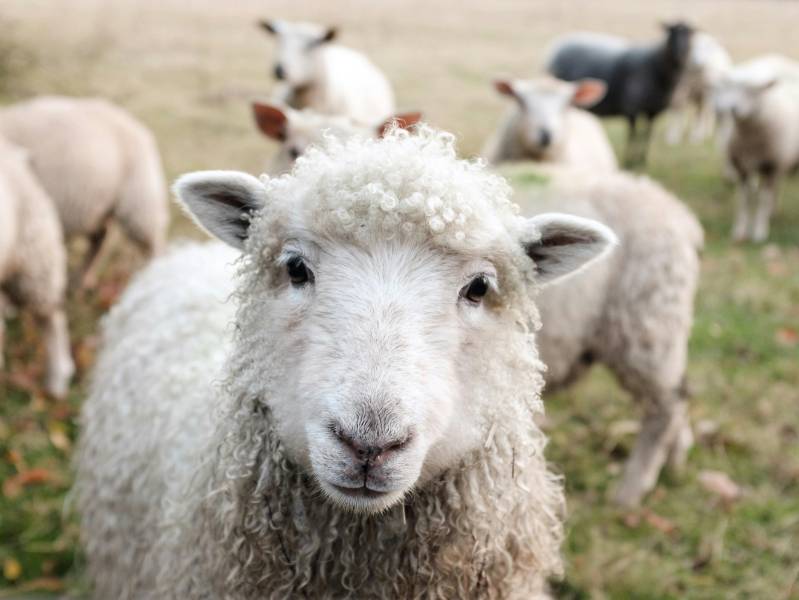You've probably noticed that wool garments keep you remarkably warm, even in harsh conditions, but there's more to this natural fiber than meets the eye. The science behind wool's exceptional warming properties involves an intricate system of microscopic structures and biological features that work together to regulate your body temperature. From its unique ability to trap air in crimped fibers to its extraordinary moisture-wicking capabilities, wool performs a complex dance with your body's thermal regulation system. Understanding these mechanisms won't just help you appreciate your favorite wool sweater ... it'll transform how you approach cold-weather clothing choices.
What Men's Health Issues Concern You Most?
- Wool keeps men warm through its unique microscopic structure of crimped keratin fibers that trap air, absorb moisture while generating heat, and maintain insulation even when wet, making it superior to synthetic materials for cold weather protection.
- The molecular architecture of wool includes a complex matrix of proteins and exterior scales that work together to create a dynamic temperature control system, generating an additional 2°C of warmth through heat of sorption while maintaining a thermal conductivity of 0.04 W/(m·K).
- Different wool types serve distinct purposes: merino excels for next-to-skin base layers with fibers under 24 microns, cashmere provides lightweight luxury warmth at under 19 microns, and lambswool offers durable insulation with 22-28 micron fibers.
- Strategic wool layering maximizes warmth by creating multiple insulating zones, with thin merino base layers absorbing moisture, mid-weight layers trapping warm air, and weather-resistant outer shells protecting against the elements.
- Wool's sustainable properties include natural biodegradation within months, ten times longer garment life than synthetics, and reduced washing requirements due to natural antimicrobial properties, making it an environmentally responsible choice for cold weather wear.
- Understanding Wool's Natural Heat Properties
- Wool Versus Cold Weather Science
- Moisture Management For Temperature Control
- Body Temperature Regulation Benefits
- Wool Structure and Warmth
- Smart Layering With Wool
- Choosing The Right Wool: A Man's Guide To Warm Weather Fibers
- Sustainable Style: Wool's Environmental Edge
- Wool Is An Ancient Secret To Keeping Men Warm
With winter coming up quick, it's time to bundle up. We all know that the experts advise us to wear layers of clothes to help insulate our bodies and keep us warm. Air gaps between those layers do wonders for keeping body heat from escaping, but beyond simply wearing layers, WOOL is a fabulous natural fabric that has kept men from freezing for thousands of years. From military uniforms to modern merino wool socks, this is an ancient secret that men deserve to know more about.

Understanding Wool's Natural Heat Properties
When you break down wool's remarkable ability to keep us warm, it all starts with its unique fiber structure. The layered structure design provides exceptional durability and protection against the elements.
You'll find that each wool fiber is naturally crimped and wavy, creating countless tiny air pockets when the fibers come together - that's where the magic of wool insulation happens.
Think of these fiber characteristics like your own personal climate control system. The hollow spaces within each strand trap your body heat, while the outer layer's microscopic scales work like tiny shingles on a roof, protecting the fiber and helping to maintain warmth. These fibers can absorb 30% moisture content without compromising their insulating effectiveness.
Fundamentally, this means that when you're walking around with a wool jacket, you have millions of tiny temperature regulators working together to insulate your body.
Wool Versus Cold Weather Science
Wool's natural properties make it superior to synthetic alternatives in harsh conditions. While synthetics can leave you clammy when wet, wool maintains its insulating properties even when soaked. Though synthetic fleece may be lighter, wool's natural wind resistance provides better protection against winter gusts. Its unique fiber structure delivers endothermic warmth across a broad range of conditions, adapting to activity levels through exceptional moisture management. This versatility makes wool the optimal choice for unpredictable weather.
Moisture Management For Temperature Control
Wool's remarkable moisture-management capabilities make it the ultimate performance fiber. The naturally coiled fibers absorb 30% of their weight in sweat while keeping skin dry, and trap air for superior insulation. Wool outperforms synthetic materials by absorbing 36% more moisture vapor, regulating temperature in both cold and warm conditions through effective moisture wicking and evaporation. Unlike cotton, wool maintains its insulating properties even when wet. Its natural antimicrobial properties prevent odor-causing bacteria, making it ideal for active wear.
Body Temperature Regulation Benefits
Since your comfort depends heavily on maintaining the right body temperature, wool proves itself to be nature's most effective thermoregulator.
The heat absorption kicks in during humid conditions to generate extra warmth. You'll appreciate how its insulative properties work like your personal climate control system, keeping you cozy in winter and cool in summer. The thermal dynamics of wool's crimped structure create tiny air pockets that trap heat when you need warmth, while also releasing excess moisture to prevent overheating. The natural fibers can absorb 30% moisture without feeling wet against your skin.
You're getting the best of both worlds with wool's natural ability to adapt to your body's needs.
Whether you're battling winter's chill or dealing with summer's heat, wool's got your back. Think of it as your body's faithful temperature guardian, working round the clock to guarantee you're never too hot or too cold - just perfectly comfortable.
Wool Structure and Warmth
The microscopic architecture of wool explains its remarkable ability to keep men warm in challenging conditions. At the nanoscale level, wool's complex matrix of hydrogen-bonded proteins and disulfide bridges creates a stable yet flexible structure that responds dynamically to environmental changes, while its hydrophobic exterior scales and hydrophilic core enable superior moisture management.
Molecular Design
Each wool fiber consists of keratin proteins and a protective lanolin coating, creating a naturally crimped structure that forms countless tiny air pockets. Combined with the fiber's hollow medulla core, these pockets trap up to 80% air by volume, making wool nature's most effective insulator.
Temperature Control System
The fiber's exterior scales work like microscopic shingles, protecting against moisture and triggering the heat of sorption - a chemical reaction that generates an additional 2°C of warmth when moisture binds to the fiber. With a thermal conductivity of 0.04 W/(m·K), wool significantly outperforms cotton's 0.06 W/(m·K) in keeping you warm. Interestingly though, while wool is best known for keeping men warm - in reality, wool is beneficial in warm weather too as it can help regulate body temperature in warm weather too and help keep the body cool during hot months including being able to wick more than 25% more moisture away from the body compared to polyester and other synthetic fabrics.
Performance Under Pressure
The orthocortical cell structure within wool fibers maintains these insulating properties even under compression or when wet, explaining why superfine merino wool with its extra-crimped fibers excels in both base layers and outerwear.
In essence, wool is nature's perfect insulator - millions of years of evolution have created a fiber that acts like a microscopic temperature-regulating machine, automatically adjusting to keep you at your optimal comfort level.
Smart Layering With Wool
A thin merino base layer against the skin maximizes moisture-wicking and temperature regulation, while absorbing up to 30% moisture vapor. Add a mid-weight wool sweater or fleece to trap warm air between layers, creating an insulating system that works with your body's natural heating process. Complete the setup with a weather-resistant shell to protect against wind and rain while allowing the wool layers to maintain optimal insulation.
Base Layer Best Practices
Mastering wool base layers requires understanding both material selection and smart layering techniques.
When you're choosing your base layer, opt for merino wool or merino blends that'll give you the best of both worlds - natural fiber comfort with improved durability for base layer longevity. You'll appreciate how merino's naturally antimicrobial properties support wool sustainability by requiring less frequent washing. The fabric's ability to regulate body temperature makes it an exceptional choice for varying weather conditions. Garments with brushed interiors provide enhanced warmth retention while maintaining breathability.
For the perfect fit, consider your activity level when selecting fabric weight. If you're hitting the slopes, go for a midweight option around 180-220g/m² that'll keep you cozy without overheating.
For extra chilly conditions, look for designs with higher necklines and waffle patterns that trap warm air. Remember, your base layer should feel snug but not restrictive, allowing you to move freely while maintaining that essential next-to-skin contact.
Essential Layering Combinations
Smart wool layering maximizes both style and function. A lightweight merino sweater over an Oxford shirt or fine-gauge V-neck under a blazer delivers sophisticated warmth. For outdoor pursuits, a wool vest under a weather-resistant shell provides core warmth without restricting movement. Layer thin, smooth materials against the skin, progressively building to thicker, more textured pieces for optimal insulation and a polished appearance.

Choosing The Right Wool: A Man's Guide To Warm Weather Fibers
Understanding the distinct properties of different wool types helps men make smarter investments in their winter wardrobe.
Merino Wool: The Performance Champion
Merino's superfine fibers (under 24 microns) make it ideal for next-to-skin base layers and athletic wear, while its superior moisture-wicking capabilities and temperature regulation make it the go-to choice for active men.
Cashmere: The Luxury Insulator
With fibers under 19 microns, cashmere provides exceptional warmth despite its lightweight nature, making it perfect for refined sweaters and scarves that offer both sophistication and thermal protection.
Lambswool: The Durable Classic
Lambswool's slightly coarser fibers (22-28 microns) deliver excellent durability and warmth retention, making it ideal for heavy-duty sweaters and outerwear that can withstand regular wear.
The choice between these wools often comes down to intended use - merino for performance, cashmere for luxury, and lambswool for durability. Understanding these distinctions allows men to build a versatile winter wardrobe that balances comfort, style, and function.
Sustainable Style: Wool's Environmental Edge
Wool outperforms synthetic alternatives in both environmental impact and longevity. As such, regardless of whether you select Merino Wool, Cashmere, or something else - wool is a great choice for men who want to keep warm during fall and winter months while also being more environmentally responsible.
While fleece sheds microplastics and petroleum-based materials drive carbon emissions, wool biodegrades within months and lasts 10 times longer than synthetics. The natural production cycle - one sheep producing a new fleece annually using only grass, water, and sunshine - stands in stark contrast to energy-intensive synthetic manufacturing. Wool's self-cleaning properties reduce washing frequency, saving water and energy while extending garment life. For the modern man focused on both performance and environmental responsibility, wool represents the intelligent choice for sustainable style, from boardroom suits to outdoor gear.
Wool Is An Ancient Secret To Keeping Men Warm
You'll find that wool's remarkable ability to keep you warm comes down to pure science. It's not just about throwing on a wool sweater - it's about understanding how those crimped fibers trap heat, manage moisture, and regulate your body temperature. By choosing wool and layering it properly, you're working with nature's own high-tech fabric to stay comfortable in cold conditions.
Beyond its ancient origins, wool remains the cornerstone of a well-dressed man's winter wardrobe because of its unmatched scientific properties. From the boardroom to the wilderness, wool's microscopic architecture of crimped fibers and natural moisture management creates a sophisticated personal climate control system that adapts to any situation. This remarkable natural technology hasn't just kept generations of men warm - it's helped shape the evolution of masculine style itself.
Hey James Hills wants you to share this!

